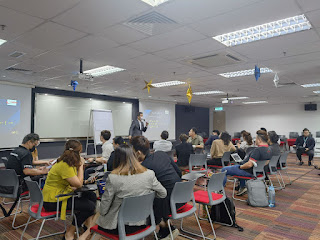Discover the 4 Types of Participants in a Class and How to Effectively Engage Them
In any learning environment, there are typically four types of participants. Understanding these groups and their needs can help educators tailor their approach to maximize the effectiveness of their teaching.
The first group of participants are those who don't know what they don't know and are unsure why they are in the class. As an educator, it is important to ensure that participants are adequately informed about the program, its objectives, and the agenda. While it is true that many people may not read the fine print, it is the educator's responsibility to make sure that participants are prepared and ready for the class. As the saying goes, "once the student is ready, the teacher appears."
The second group of participants are those who know what they don't know and are eager to find out more. While this group is generally the most enthusiastic, it is also the most demanding. Educators must be well-prepared and able to match the energy level of this group in order to deliver a positive experience. Clear communication of objectives, outcomes and delivery methods is crucial to meeting their expectations. Adopting a "under promise, over deliver" approach can also help ensure a positive experience.
The third group of participants are those who know what they know and want to find out what they don't know. While this group can be a little more difficult to engage, they can also be the most insightful. Educators should welcome this group and encourage them to share their experiences and insights with the class. It is important to remember that even those who are knowledgeable about a subject may still have blind spots that they are unaware of.
The fourth group of participants are those who know what they know and come to contribute. While this group may be rare, their insights can be invaluable. Educators should consider inviting special guests or practitioners to share their experiences with the class. It is worth reflecting on how these individuals became experts in their field, and whether they fall into any of the other participant groups.
In summary, understanding the four types of participants in a class can help educators tailor their approach to maximize learning outcomes. By setting clear expectations, welcoming all participants, and being well-prepared, educators can ensure a positive and productive learning environment.
Last but not least, how do you prepare yourself to conduct effective and efficient learning experiences for your participants? Feel free to share with me




Comments
Post a Comment